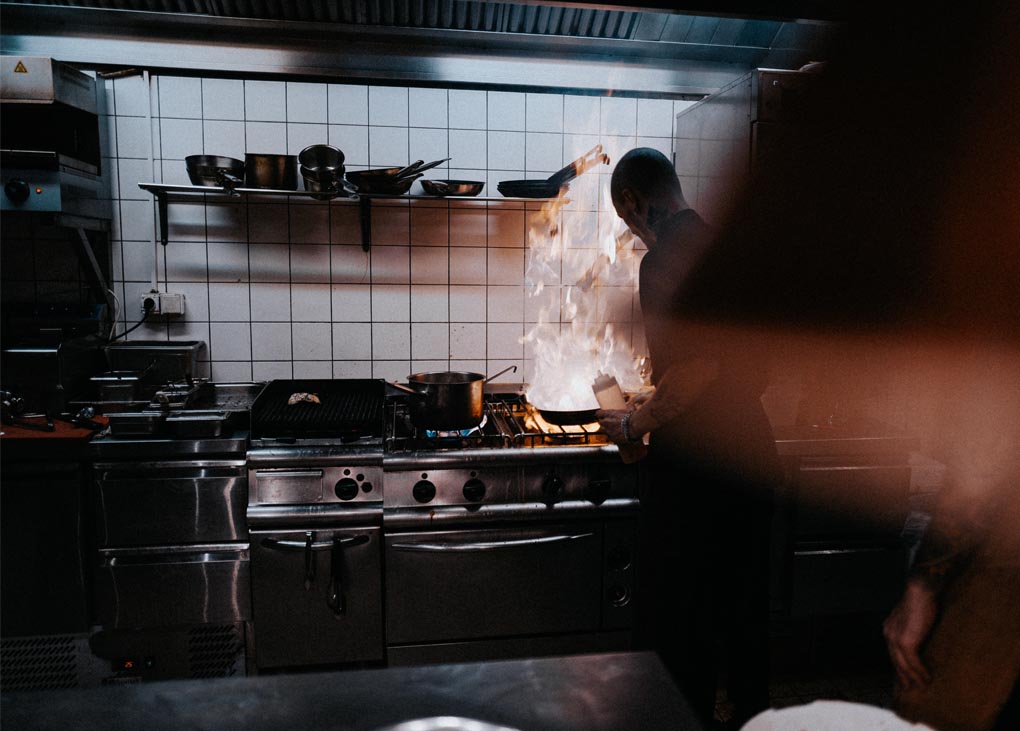AIRAH’s Commercial Kitchen Exhaust Special Technical Group has released a free best practice guideline for the industry.
Freely available to download from the AIRAH website, the guide highlights the fire risks associated with commercial kitchen exhaust systems and provides strategies for minimising these risks.
Technical editor Vince Aherne, F.AIRAH, says that the specialist guide is a vital aid for practitioners – and addresses a major safety issue for all building occupants.
“One of the most common places for a fire to occur in a building is in a kitchen,” says Aherne. “This is particularly true for restaurants and commercial kitchens, where most fires start at the cooking surface and spread into the kitchen exhaust hood ventilation system. When a fire enters a kitchen exhaust system it can escalate and spread rapidly due to the accumulation of grease and other debris.”
This was the case in 2014, when the renowned Stokehouse restaurant in Melbourne burnt down.
According to Aherne, maintenance contractors and health and safety assessors regularly relate kitchen exhaust “horror stories”.
“The systems have been either installed incorrectly or have been compromised since installation,” he says. “They do not comply with minimum safety standards, or have not been maintained – resulting in years of grease accumulation and high fire and health risks. A so-called ‘accident waiting to happen’.
“It is clear that many in the commercial kitchen industry do not fully appreciate the importance and risks of kitchen exhaust maintenance.”
Chair of the Commercial Kitchen Exhaust STG Graeme Williamson, Affil.AIRAH, agrees that there are knowledge gaps in the industry, and says the guide was developed to address these.
“A number of stakeholders in the industry acknowledged the shortcomings of the Australian Standards in relation to commercial kitchen exhausts, and importantly the risks associated with these systems are not well understood,” he says.
“They decided to do something about it and with the support of AIRAH formed a Special Technical Group (STG). The STG researched overseas standards to assist in defining what a best practice approach should look like, resulting in the creation of this guide.”
Williamson says the publication can benefit a wide range of stakeholders, including designers, manufacturers and supplies of equipment, installers, service providers, landlords, operators, property managers, insurers, industry associations, regulatory bodies, fire authorities, and councils.
He believes the guide will increase awareness of the risks and provide a greater appreciation of the steps that can and should be taken.
“Importantly,” he says, “the guide highlights a number of key factors to be considered in the design, installation and maintenance of commercial kitchen exhausts, and takes a more evidence-based prescriptive approach to servicing.”
This includes the basis on which to determine continuing inspection frequencies and a verification method for post-cleaning assessment. The guide provides a cost-effective management approach for commercial kitchen exhaust systems to minimise fire and health risks, maintain compliance and optimise performance.
The Commercial Kitchen Exhaust Management Best Practice Guide is available for free download from the AIRAH website.
Photo by lasse bergqvist on Unsplash
 Mark Vender
Mark Vender


Leave a Reply